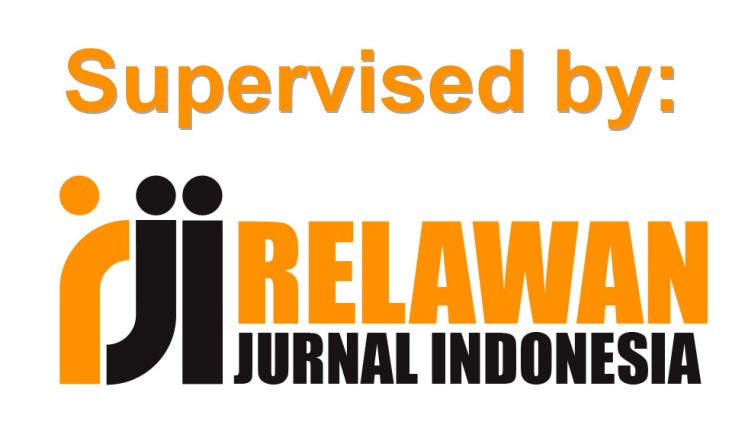Analisis Regresi Loyalitas Pengguna E-Commerce Bukalapak Dengan Variabel Technology Acceptance Model
Abstract
Online shopping is the activity of purchasing goods and services through the internet. Through online shopping, customers can preview the goods and services they want to buy on the web promoted by the seller. E-commerce and online shopping activities are becoming very popular among internet users. Customers who shop online can be classified into different purchase orientations. The purchasing orientation can influence both user loyalty Behaviour and intentions in shopping online on Bukalapak as e-commerce. Based on the results of a survey by the Indonesia Internet Service Providers Association (APJII) regarding the profile of Indonesian internet users in 2018, 34.60 per cent of the reasons for not shopping online are afraid of fraud and 21.5 per cent of them stated that they cannot directly buy the goods. The explanation above indicates that user loyalty is still quite low in online shopping. Through the Perceived Usefulness towards the loyalty Behaviour of Bukalapak users, the result of the research proves the first to fourth hypotheses that all Technology Acceptance Model (TAM) variables have a positive and significant effect on the loyalty Behaviour of Bukalapak users and through the TAM test, it is concluded that all variables used in conducting an information system analysis, most respondents answered strongly agree with the percentage of 40% and agree with the percentage of 46.50%..
Keywords
Full Text:
PDFReferences
Sugiyono, Metode Pendidikan Pendekatan Kuantitatif, Kualitatif, dan R&D. Bandung: Alfabeta, 2015.
Jogiyanto, Sistem Informasi Keperilakuan. Yogyakarta: Andi, 2007.
C. Lovelock, J. Wirtz, and J. Jochen, Pemasaran jasa manusia, teknologi, strategi (perspektif indonesia). Jakarta: Erlangga, 2010.
S. Santoso, Panduan Lengkap SPSS Versi 20. Jakarta: PT Elex Media Komputindo, 2012.
A. A. Hanggono, S. R. Handayani, and H. Susilo, “Dalam Mendukung Bisnis Online Dengan Memanfaatkan,” J. Adm. Bisnis, vol. 26, no. 1, pp. 1–9, 2016.
A. R. Dharmawan, S. H. Fitriasih, and T. Irawati, “Analisa penerapan aplikasi penjualan dan service komputer pada cv jaya citra madani dengan metode technology acceptable model (tam),” J. Ilm. SINUS, vol. 16, no. 1, pp. 65–74, 2018.
A. S. Damayanti, Y. T. Mursityo, and A. D. Herlambang, “Evaluasi Kepuasan Pengguna Aplikasi Tapp Market Menggunakan Metode EUCS ( End User Computing Satisfaction ),” Pengemb. Teknol. Inf. dan Ilmu Komput., vol. 2, no. 11, pp. 4833–4839, 2018.
S. Arikunto, Prosedur Penelitian Suatu Pendekatan Praktik. Jakarta: Rineka Cipta, 2010.
R. Hidayat, “Performance Appraisal sebagai Alat Pengukuran Kepuasan Kerja Karyawan,” Ilmu Manaj., vol. 3, no. 1, pp. 1–8, 2015.
D. Sunyoto, Analisis Validitas & Asumsi Klasik. Yogyakarta: Gava Media, 2012.
Supriyana, “Perencanaan Model Arsitektur Bisnis, Arsitektur Sistem Informasi dan Arsitektur Teknologi Dengan Menggunakan TOGAF :Studi Kasus Bakosurtanal.,” J. Generic, vol. 5, no. 1, pp. 1–9, 2010.
DOI: http://dx.doi.org/10.30646/tikomsin.v10i1.597
Refbacks
- There are currently no refbacks.
Editorial Office :
TIKomSiN : Jurnal Teknologi Informasi dan Komunikasi Sinar Nusantara
Published by STMIK Sinar Nusantara Surakarta
Address KH Samanhudi 84 - 86 Street, Laweyan Surakarta, Central Java, Indonesia
Postal Code: 57142, Phone & Fax: +62 271 716 500
Website: https://p3m.sinus.ac.id/jurnal/index.php/TIKomSiN
Email: tikomsin @ sinus.ac.id

This work is licensed under a Creative Commons Attribution-NonCommercial-ShareAlike 4.0 International License.










